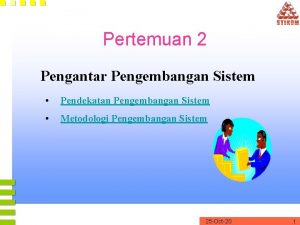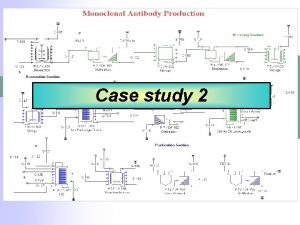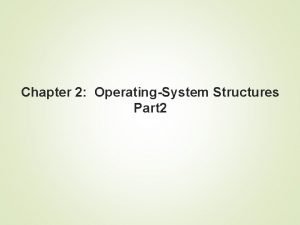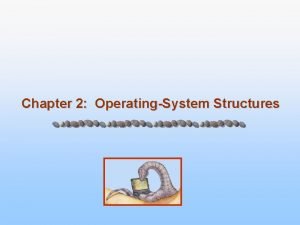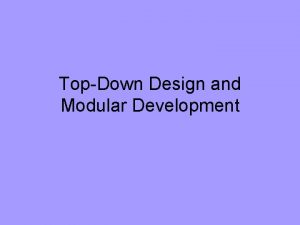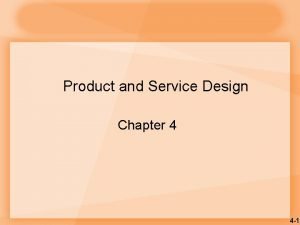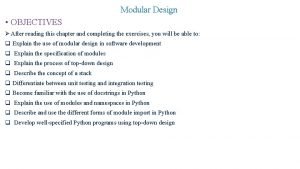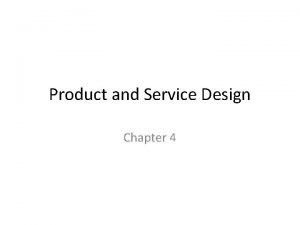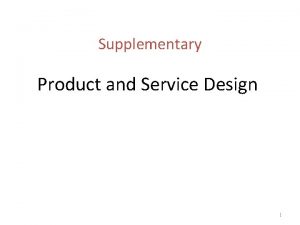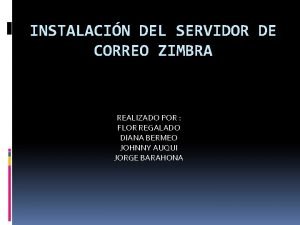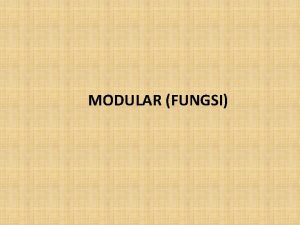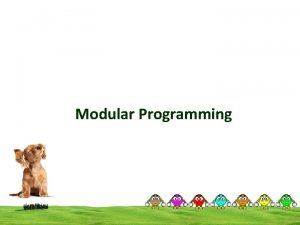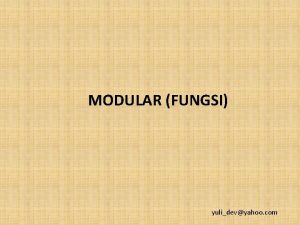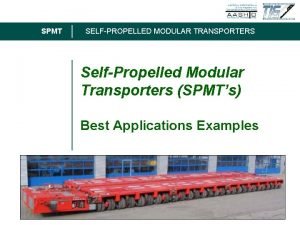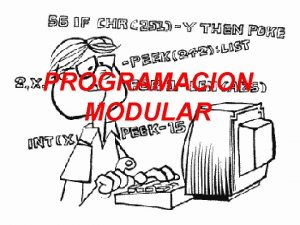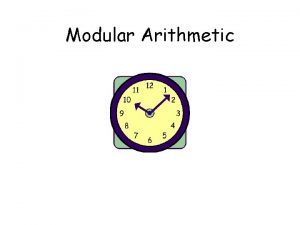How to Design an FMISa Modular Approach Gerardo














- Slides: 14

How to Design an FMIS—a Modular Approach Gerardo Uña and Richard Allen Good Internal Systems for Good Fiscal Transparency Webinar September 10, 2019

Outline of the Presentation 1. Introduction 2. Purpose of the “How to Note” 3. Evolution in the Coverage and Design of FMIS 4. Key Design Challenges 5. What is a Modular Approach? 6. Schematic Representation of a Modular Approach 7. Importance of Planning and Sound Conceptual Design 8. Benefits and costs of a Modular Approach 9. Conclusions https: //www. imf. org/en/Publications/Fiscal-Affairs-Department-How-To-Notes/Issues/2019/05/15/Howto-Design-a-Financial-Management-Information-System-A-Modular-Approach-46818 2

1. Introduction • FMISs can be defined as “as set of automated solutions that enable governments to plan, execute and monitor the budget, by assisting in the prioritization, execution and reporting of expenditures, as well as the custodianship and reporting of revenues. ” (Dener, et. al. , 2011) • The enduring objective of an FMIS is to generate timely, relevant and reliable financial data and reports that support improvements in fiscal discipline, the quality of public spending, and fiscal transparency • FMIS design features, however, have undergone a major transformation during the past 30 years 3

2. Purpose of the “How to Note” • Review recent experiences of FMIS developments in emerging economies and developing countries • Summarize main characteristics of various approaches to FMIS design that have been applied in recent years • Assess the expected impact of the digitalization of PFM functions on the design of FMISs • Discuss how increased flexibility can be built into the design of FMISs through a proposed “modular approach” 4

3. Evolution in the coverage and design of FMIS (1) • Fully integrated systems (IFMISs) were once the flagship brand • But they have proved less efficient than systems focusing on a group of “core” PFM modules which are implemented in a sequenced way • These “core” modules include budgeting, accounting, treasury, and cash management • Auxiliary PFM functions – payroll, public investment management, procurement, etc. – can be linked through interfaces • Nevertheless, several countries and their development partners continue to promote the adoption of a comprehensive FMIS from scratch 5

3. Evolution in the coverage and design of FMIS (2) Figure 1. Schematic Representation of a Comprehensive FMIS in Developing Countries 6

4. Key design challenges • A survey of 46 countries conducted as part of the How To Note – see Annex 1 - shows that failures of FMISs in developing countries result from many factors, including: – – – Failure to carry out an adequate conceptual design Poorly-defined functional requirements Automation of existing inefficient business processes Inefficient parameterization of COTS solutions Short cuts taken to ensure that the FMIS is up and running early Failure to modernize basic PFM processes (e. g. , chart of accounts) in parallel to the FMIS development – Substantial implementation delays and cost overrruns 7

5. What is a Modular Approach? • The “modular approach” focuses attention on strengthening and modernizing the “core functions” of the FMIS (i. e. , budget execution, accounting, and treasury & cash management) • It proposes three main options to modernizing the “core FMIS” modules, each at time, by: – Reengineering a specific “core FMIS” module – Developing a data-sharing layer on top of existing “core FMIS” modules – Re-platforming or migrating the “core FMIS” systems to the cloud • The “modular approach” proposes utilizing APIs and/or interoperability layers between different modules / information systems, as well as more agile software development methodologies • At the same time, the modular approach proposes maintaining all other modules in operation, without a need to replace the full information system 8

6. Schematic Representation of the Modular Approach Figure 2. Modular Approach - High Level Schema 9

7. Importance of Careful Planning and Sound Conceptual Design • In considering the options for modernizing its FMIS, a country should first undertake an in-depth diagnostic assessment of the functional and technological challenges that need to be resolved • The assessment should review the main business rules and definitions included in the conceptual design of the FMIS, and update these rules as required in the system’s software applications • The FMIS functionalities needed to address planned reforms— for example, to expand the coverage and comprehensiveness of fiscal reports—should also be considered at this stage 10

8. Benefits and Costs of a “Modular Approach” Benefits Costs Support the implementation and monitoring of fiscal rules and financial regulations, by giving priority to strengthening the FMIS’s accounting, budget, treasury and reporting functions Need to develop a common set of standards for the various information fields Flexibility to incorporate advanced technologies and different vendor’s solutions Such standards may add to technological complexities and maintenance costs of the system Use of diverse types of software and hardware architecture – not tied to web-based solutions Avoidance of the need to replace all or most of the existing FMIS modules Facilitated exchange of information between core and non-core modules 11

9. Conclusions • Many developing countries and EMs continue to face severe challenges in modernizing their core FMISs associated with the systems’ core functions, institutional coverage and IT platforms • Replacing a core FMIS with an entirely new system is unlikely to be the optimal strategy in most cases • A “modular approach” is usually to be preferred in which specific core modules are updated or replaced • Measures should also be taken to improve the system’s interoperability and/or re-platform the system • Emerging challenges are linked to cybersecurity, privacy concerns, digital inclusion, and e-government initiatives • Solutions should be country-specific. However, implementation of an effective FMIS depends on two critical preconditions: the correct motivation and political commitment, and the presence of a fundamentally sound PFM system. 12

Thank you!

Annex I Main Findings of the Survey of 46 Countries Table 1. Main Challenges in Implementing a Core FMIS in Developing Countries and EMs # Topic Main Weaknesses of the Core FMIS Problems in the generation of accurate and timely fiscal reports 1 Accounting and Fiscal Reporting Failures to integrate the chart of accounts and the budget classification Absence of a data warehouse or the capacity to drill-down to detailed accounting and budgetary information 2 Tracking of Cash Flows and Bank Reconciliation Deficiencies related to bank reconciliation and electronic payments 3 Budget Execution and Internal Controls Weaknesses in supporting the management and control of the budget 4 Treasury and Cash Management Insufficient support for government banking functions 5 Institutional Coverage Incomplete coverage of central government entities IT Platform Software licenses expired; limited hardware capacity and/or inadequate database maintenance 6 Poor or non-existant connectivity in regional or remote locations 7 Interoperability and data sharing capabilities Source: Uña, Allen and Botton (20190 Absence of shared information with other PFM systems (e. g. revenue collection, debt management, public procurement, payroll, or public investment projects. 14
 Fmisa
Fmisa Modular approach adalah
Modular approach adalah Sequential modular approach
Sequential modular approach Solaris modular approach
Solaris modular approach Solaris modular approach
Solaris modular approach Top down modular design
Top down modular design Modular architecture vs integrated architecture
Modular architecture vs integrated architecture Delayed differentiation and modular design
Delayed differentiation and modular design Modular design yearbook
Modular design yearbook Objectives of modular software design
Objectives of modular software design What does product and service design do?
What does product and service design do? Modular plant design
Modular plant design Delayed differentiation and modular design
Delayed differentiation and modular design Libind
Libind Biografia gerardo diego
Biografia gerardo diego

